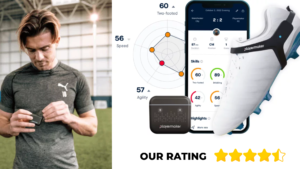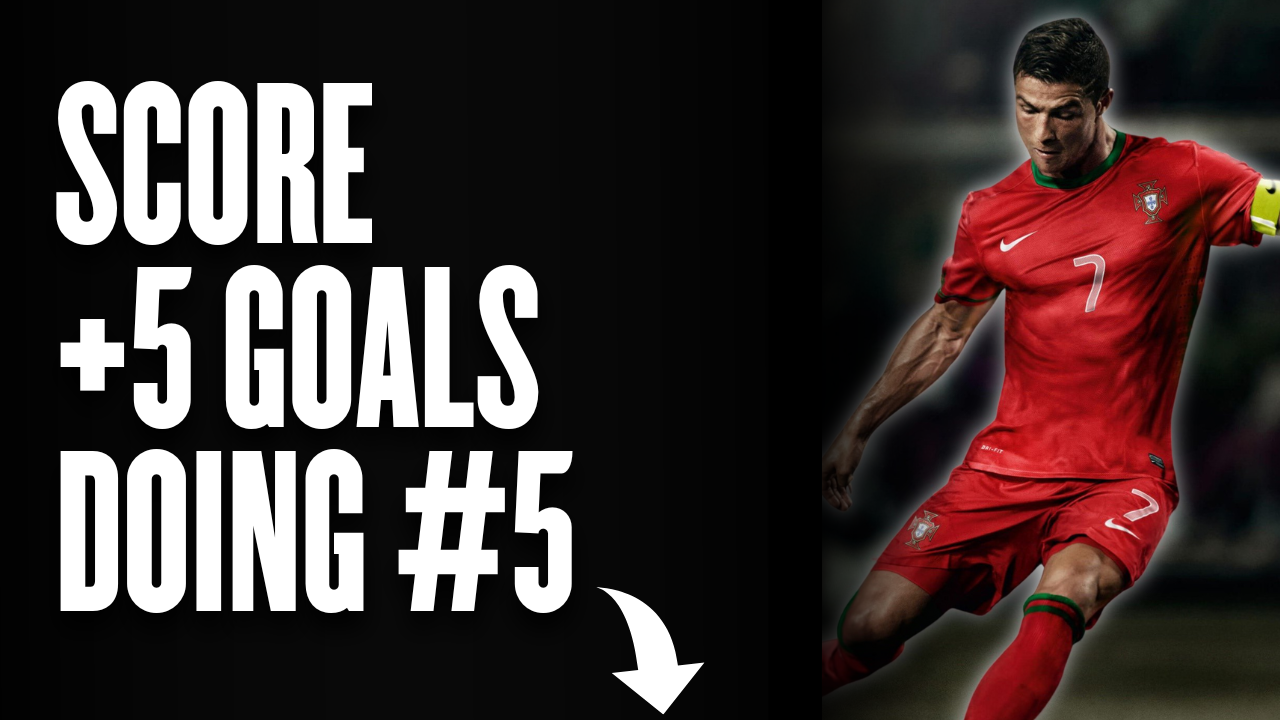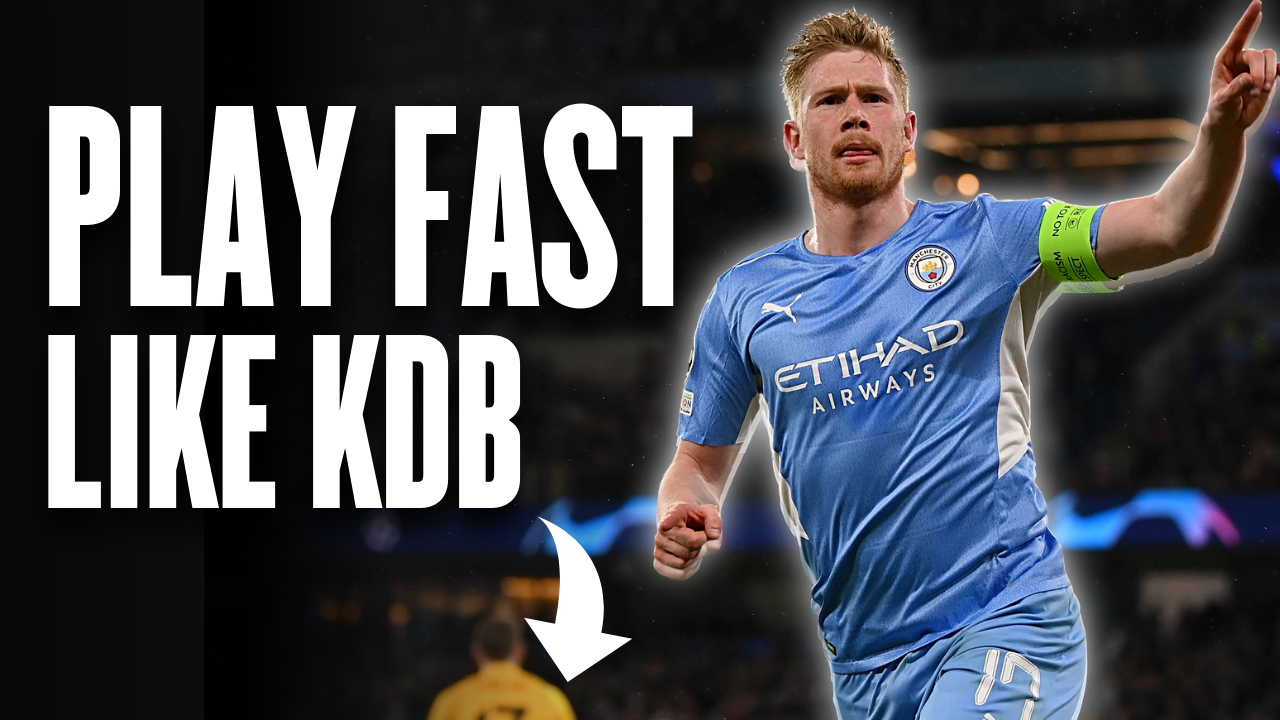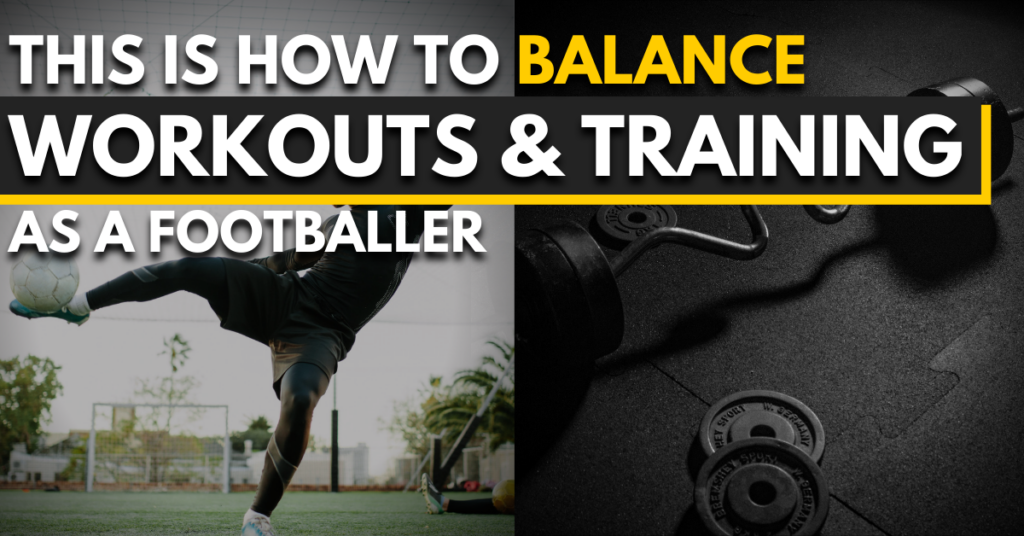
We always get the same question on Instagram; “How do I balance workouts & training as a football player?”
There is definitely no “one size fits all” answer to this question but you can definitely follow some basic principles of coaching that will help you manage your daily and weekly workload in a more efficient way that is going to help you a) manage your time efficiently, b) use your energy wisely, and c) lead to the best possible adaptations you can get from training without putting your body at high injury risk.
What Are Stressors In Football?
A stressor is something that causes some sort of physiological or psychological strain or tension. In the field of sports performance, we have all sorts of stressors that footballers put their bodies and minds through.
Although stress might be attached to a negative feeling, it is a prerequisite in sports. Without stressors, you wouldn’t progress your game any further.
I want you to think of “stress” neutrally.
If you stress your body uncontrollably, something bad is going to happen. If you apply appropriate doses of stress, then this is going to yield the best possible results and trigger progress.
At the end of the day, if you don’t get outside of your comfort zone, as many “gurus” like to preach, you simply won’t level up your performance. This applies to every area of life – not just football. Training stress is a form of discomfort every athlete who takes his/her game seriously needs to seek in order to grow.
Identifying The Different Stressors In Football
Now that you’ve understood what stressors are and how important they are for your development, we need to identify what stressors a footballer typically implements in his/her daily and weekly life.
We have physical and mental stressors, such as…
- Team Training
- Individual/Technical Training
- Strength & Power Training
- Speed & Change of Direction/Agility Training
- Conditioning Work
- Mobility Work
- (P)Rehabilitation & Activation
- Studies/Regular Job/Hobbies
- Interpersonal Relationships
In this article, we are mainly going to talk about the stressors attached to your physical development as a player and leave others out for another article.
In What Order Should I Workout & Train As A Football Player?
Football players have to deal with a variety of work/stressors in their daily and weekly lives. As a result, the question of how to balance workouts & training as a football player may arise.
And that is good. You need to care about your time and energy’s strategic investment to yield the most benefits out of your work.

*As an affiliate, I'm earning from qualifying purchases without any extra charges being placed on you.
That is also one of the reasons you see us constantly emphasizing the fact that you need to work smarter, not harder.
The way/order you do your daily and weekly work matters!
So in what order should a football player work out and train? There are mainly two variations in the order you should be training.
You can either follow this order…
- Team/Individual Training > Speed/COD/Agility Training > Strength/Power Training > Conditioning
or that one…
- Speed/COD/Agility Training > Team/Individual Training > Strength/Power Training > Conditioning
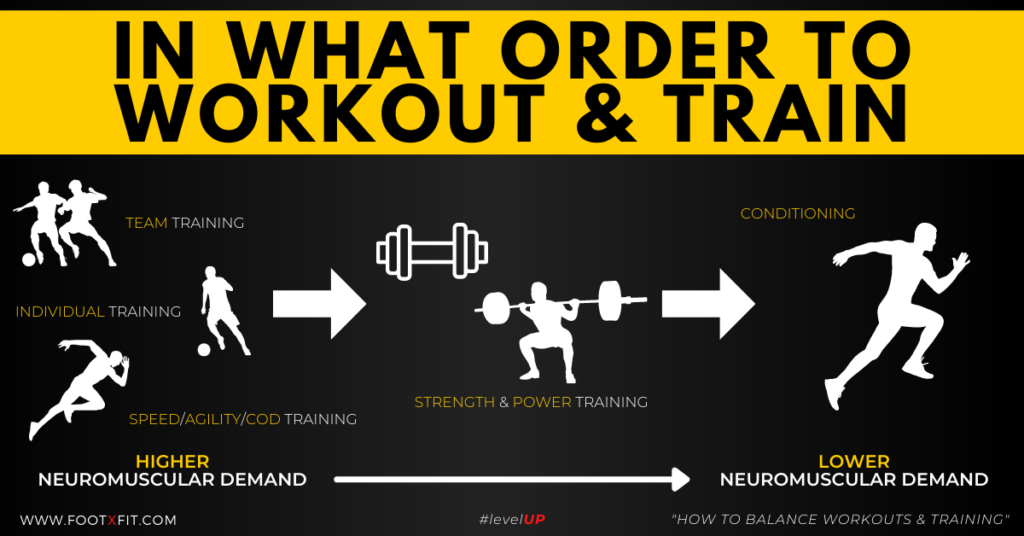
You can see that we didn’t include mobility sessions and (p)rehabilitation/activation work inside those stressors.
The reason behind that is that those stressors are usually low-impact activities footballers can implement in their daily lives without any detriments to their performance. In fact, they can even aid performance and recovery if done close to other stressors.
So feel free to do any (p)rehab, activation, or mobility work directly before or after a session with the team or at the gym.
Why Should I Train In That Order?
The whole idea behind this way of structuring work is simple; do the work that requires high physiological and psychological effort first, then do the rest.
Because we’re playing football, football becomes the stressor we want to prioritize.
On one hand, team training is the most effective training stressor to improve football performance but also the primary factor that contributes to you either starting a game or being benched.

*As an affiliate, I'm earning from qualifying purchases without any extra charges being placed on you.
On the other hand, individual training (mainly technical) is a physical and mental task that requires your whole CNS (Central Nervous System) to be switched on to engrain proper motor patterns.
Working on your technique with your neuromuscular system being excessively fatigued can lead to false motor patterns. This, in turn, can be detrimental to your technical skills if sustained in the long term as a habitual practice.
Effective training, therefore, becomes a matter of quality repetitions – not quantity.
As you can see though, speed and COD/agility training might also take that first place in our priority list.
The reason behind that remains the same. We want to prioritize the workload that involves higher training intensities and therefore maximal efforts. This is typical in speed and COD/agility training where athletes are required to perform at their peak.
Then, gym work can follow. The efforts you put in the gym are submaximal (at least most of the time) and don’t require the same neuromuscular recruitment in comparison to speed and agility training or a team session.
Lastly, conditioning should be implemented at the latter phases of your training regimen, since we a) don’t want to compromise activities that require a high neuromuscular drive (speed/COD/agility/team training) and b) gain far better adaptations in terms of conditioning if we’ve already put our bodies through other training stressors.
Placing conditioning drills at the end of a training session/day can also lead to an increase in mental toughness since you push yourself to do that bit of extra work that puts us outside your comfort zones. The benefits are therefore not only physical but also mental.
Exceptions Apply…
In a perfect world, every football player would balance his/her workouts & training in the “ideal” order. However, reality can sometimes “destroy” our plans and force us to adjust by applying other solutions.
Things like school, a regular job, or other obligations can get in your way. Instead of quitting work you need to find other solutions to your problems.
For example, if you have an upper body gym session, you might as well do it first if that is convenient for you without compromising your performance (team training or speed/agility) that much.
If the order(s) we mentioned above don’t really work for you, at least allow yourself an 8 to 12-hour recovery window between sessions. This will help you refuel and recover to achieve efforts close to the desired level.
Conclusion
Time and energy are two resources that are limited in the athletic world. Using them wisely will ensure that footballers don’t burn themselves out but at the same time get the most out of their work.
To sum up this topic, you need to strategically program your training in an order that starts from the tasks with a high neuromuscular effort (speed, agility, and change of direction training) or with the ones that are more important to us (team or technical training) and end with work that requires submaximal efforts. This can be work in the gym or conditioning.
Once you understand basic principles like these, you start identifying the value of smart work. It is not about the quantity of your training but the quality and intent you put into each rep, set, and minute of training.


